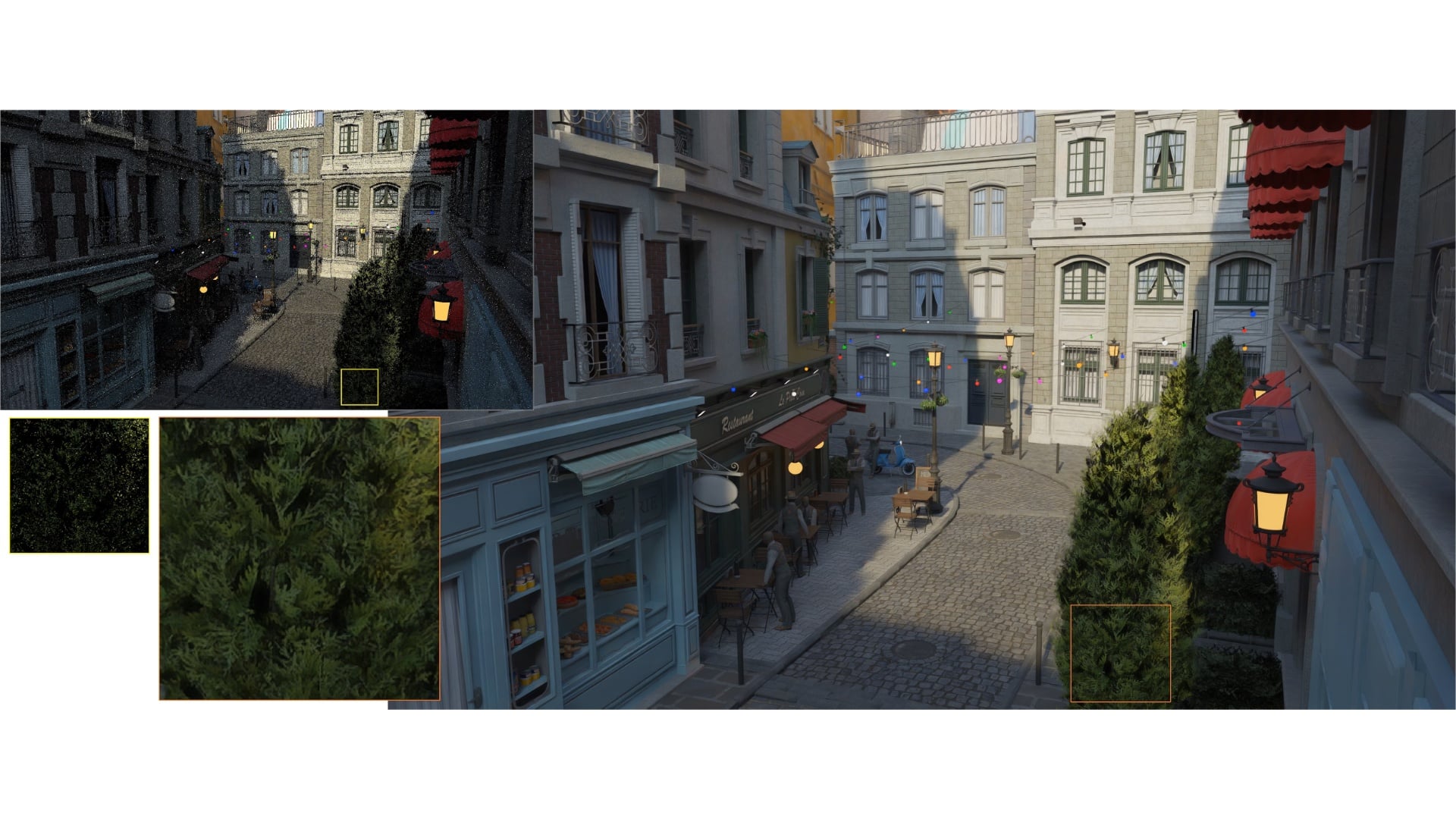The new feature should be possible even with RX-6000 GPUs.
So far, AMD has avoided using artificial intelligence within FidelityFX Super Resolution (FSR). Even with the update to FSR 3.1, it has remained with temporal upscaling – but with FSR 4, this will change, as the company has already confirmed.
In the developer blog called “GPUOpen”, AMD is now talking about an upcoming graphics feature: According to the blog entry, the developers are currently focusing on the research of
- According to the developers, the work primarily revolves around a neural denoiser , which is supposed to clean up noisy images created from a limited number of “ray samples” – in other words, the equivalent to Nvidia Ray Reconstruction
- While the post doesn’t explicitly name the competition, the assumption was confirmed by Mateusz Maciejewski, an AMD engineer involved in the research, on X/Twitter:
Is this an alternative to Ray Reconstruction from Nvidia?, looks very useful, is good to know about the alternatives in development by AMD
— Vector (@Rommel16102023) October 28, 2024
How does path tracing actually work – and how does ray reconstruction come into play?
Path tracing basically refers to an algorithm designed to simulate global illumination.
- In extremely simplified terms: With “real” path tracing, thousands of calculations of light rays per pixel are used. The results of the individual light rays – also called “Primary Rays” – are averaged; the brightness of the individual pixel is determined from this.
- The “Secondary Rays” are used to perform the same calculation for indirect lighting; “Shadow Rays” are used to determine whether a point on a surface is in shadow.
- Path tracing refers to the combination of the calculation of all three ray typesand is considered the ultimate when it comes to the realistic simulation of lighting in virtual space.
However, “real” path tracing is currently almost impossible to achieve in terms of available computing power, which is why various algorithms such as photon mapping or “importance sampling” are also used in films. Even with these, rendering a single frame can take several hours.
In order to still achieve reasonable real-time calculations, Nvidia – and soon AMD as well – reduces the number of rays used for the calculation. However, this results in another problem: the image becomes increasingly noisy as the number of rays decreases.
- Within the Nvidia Ray Reconstruction, neural networks are used to act as a denoiser and remove the noise; in addition, the details of the scene are reconstructed using such a neural network.
- The trick with AMD: In contrast to Nvidia, the denoising and upscaled reconstruction of the scene are to be carried out within a single neural network, from which a “high-quality image” is then to follow. The blog entry also provides an example image:
Open source and RX-6000 compatibility as an indication of FSR 4?
Mike Burrows, Vice President of AMD’s Advanced Graphics Program, gives us a hint that this is a feature for FSR 4.
According to Burrows, the path tracing model, which is still under development, will be available for both RDNA 2 (RX 6000) and RDNA 3 (RX 7000), whereby the latter generation should of course be somewhat more performant thanks to the available AI accelerators, including the WMMA function ,
Congrats to the team getting this out there. Though perf numbers not published yet – think real real-time, not siggraph real-time 😉
As always, intent is full permissive source to be released.https://t.co/7CNy9yEADb— Mike Burrows (@zebedee666) October 28, 2024
As always, the new technology will be available as an open-source solution – similar to how AMD has handled the previous FSR generations.
- In view of the open source and compatibility with older GPUs, an implementation of the new supersampling and path tracing method in FSR 4 is therefore an obvious choice. However, a concrete confirmation is still pending.



